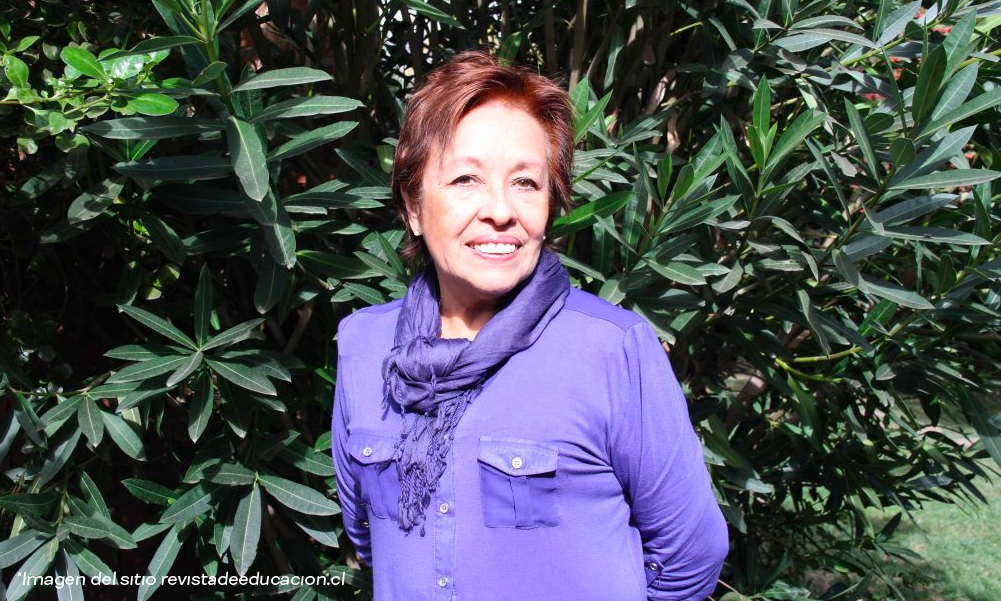About the dropout at national level, and according to data provided by the Ministry of Education in April, during 2020 more than 186,000 children and young people between 5 and 21 years old dropped out of the school system and another 39,498 children did not enroll in any school establishment this 2021 in Chile.
The child and youth neuropsychiatrist of the University of Chile and specialist in neurosciences applied to education, Amanda Céspedes, makes a deep analysis of the mental health situation of educational communities. “The first thing is to understand that this is not a normal situation, we are living an abnormal situation and this has important effects on the mental health of all people, whether they are children, young people or adults. For this reason, the establishments must give flexibility to the school community to adapt to a seriously abnormal situation”.
The expert comments that one of the factors that is negatively influencing school communities is the general context, since after 14 months of the pandemic, the feeling of overwhelm and fatigue is very strong. “The greater the social vulnerability, the greater the degree of loss of well-being,” he explains. On the other hand, he says that another factor that influences, but in a positive way, is the degree of resilience of families and educational establishments, to absorb the impact of stress.
“Throughout this period, I have been able to observe that there are families that work hard not to break, not to break, and that is admirable. There are also schools that have been extraordinarily resilient and flexible in terms of being able to alleviate the workload of teachers and the situation of children and their families. They set an example to face these difficult times,” says the specialist.
Safe environments to avoid stress
Regarding the most negative effects, Amanda explains that there are certain warning signs and indicators of stress, such as sleep disorders, night fears, eating disorders and irritability. In the case of young people, the first sign is truancy, which means that a student is connected to the class, the teacher sees him/her present, but in reality “the student does not have his/her senses set on the session, so he/she does not learn”. Additionally, he says that a lot of addiction to video games has been observed in the case of men, and a very high connection to social networks such as TikTok and Instagram in the case of women.
Céspedes points out that the best strategy to prevent stress in children is for adults to be able to create emotionally safe environments. “First of all, parents and teachers should focus on children and be sensitive about their feelings and emotional skills because today they are exacerbated. The other element is the ability to listen, children need to be heard. An emotionally safe environment is an environment where everyone contributes to resolving conflicts”.
But how is an environment of emotional security created? The doctor comments that it is not an easy task for either parents or teachers to contain the situation, since they have also been affected emotionally. “We have to get the disturbing emotions out of our interior because when fear, anguish, uncertainty and anger take hold of us, toxic effects are generated in our organism,” she explains.
She also points out that “through trust and hope it is possible to create environments of emotional security, we must seek a state of calm, tranquility and hope. This state is welcoming for the rest. A state of calm allows us to listen, to be sensitive, to put ourselves in the other person’s place and it is essential that this is done in every place where there are minors”.
To combat anxiety and fear, the specialist recommends that teachers, parents and children implement breathing and relaxation techniques. On the other hand, she stresses the importance of taking care of food, good sleep and physical activity. The Amanda Educational Foundation, an organization she presides, which works for the welfare of children and adolescents, will open courses to combat the effects of anxiety at the end of May.
Another initiative that seeks to promote experiences focused on social-emotional education is the “Emotions First” campaign of Education 2020. In the following link you can find testimonies, guides and seminars so that management teams, teachers and families can work on strategies that contribute to well-being.
Finally, Amanda Céspedes calls on school communities to take care of their students and have hope. “We have to have faith that this is going to happen and be responsible. Being a leader is a responsibility, and a good leader prioritizes the verb to take care, not the verb to demand. The educational leader has to take care of his or her teachers, take care of the women teachers who are very much demanded by the care of families, and take care of their students.”

